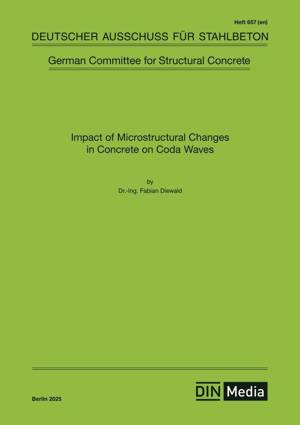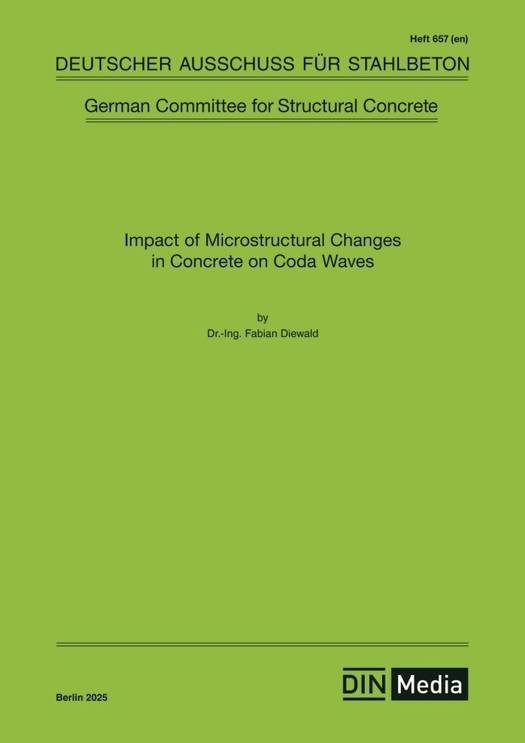
Je cadeautjes zeker op tijd in huis hebben voor de feestdagen? Kom langs in onze winkels en vind het perfecte geschenk!
- Afhalen na 1 uur in een winkel met voorraad
- Gratis thuislevering in België vanaf € 30
- Ruim aanbod met 7 miljoen producten
Je cadeautjes zeker op tijd in huis hebben voor de feestdagen? Kom langs in onze winkels en vind het perfecte geschenk!
- Afhalen na 1 uur in een winkel met voorraad
- Gratis thuislevering in België vanaf € 30
- Ruim aanbod met 7 miljoen producten
Zoeken
Impact of Microstructural Changes in Concrete on Coda Waves
€ 86,95
+ 173 punten
Omschrijving
Monitoring the condition of concrete structures is a macrosocial task for safety and economic reasons that increasingly uses techniques from the field of non-destructive testing. A promising technique for structural health monitoring of heterogeneous materials such as concrete or reinforced concrete is coda wave interferometry, as it is sensitive to even weak changes in the material and can therefore be used as an early warning system for damage. The technique is based on comparing two ultrasonic wave forms to derive a change in velocity. The change is particularly well measurable and resolvable in heterogeneous media due to strong scattering in late arriving wave packages, the coda. The objective of the study was to investigate the relationships between transient impacts, such as temperature, relative humidity, and external stress changes, on the velocity change of coda waves propagating in concrete. Furthermore, long-term phenomena such as shrinkage, creep, and hydration were characterized using the relative velocity change. The investigations published in three articles showed that temperature and stress changes in the elastic range are linearly related to the velocity change of the coda. The interaction of temperature and humidity, on the other hand, led to a non-linear change. Furthermore, the results demonstrated that shrinkage, creep, and hydration can be described not only by conventional measurement techniques but also by means of coda wave interferometry.
Specificaties
Betrokkenen
- Uitgeverij:
Inhoud
- Aantal bladzijden:
- 120
- Taal:
- Engels
- Reeks:
- Reeksnummer:
- nr. 657
Eigenschappen
- Productcode (EAN):
- 9783410659525
- Verschijningsdatum:
- 30/04/2025
- Uitvoering:
- Paperback
- Afmetingen:
- 210 mm x 5 mm
- Gewicht:
- 374 g

Alleen bij Standaard Boekhandel
+ 173 punten op je klantenkaart van Standaard Boekhandel
Beoordelingen
We publiceren alleen reviews die voldoen aan de voorwaarden voor reviews. Bekijk onze voorwaarden voor reviews.








